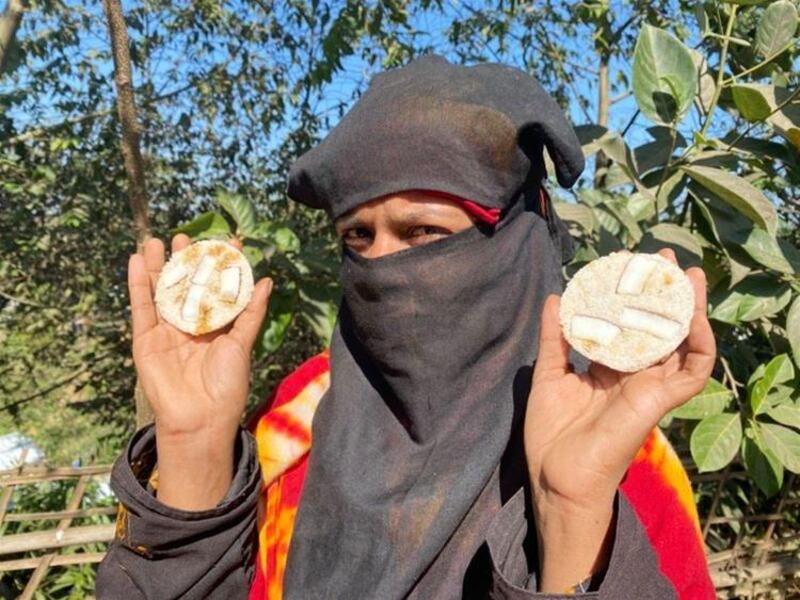The Burmese junta has protested to the International Organization for Migration about a website the U.N. agency set up to preserve the history of the marginalized Rohingya community of Myanmar, saying the site contains false statements.
The site for the Rohingya Cultural Memory Center is an IOM initiative. The military regime's appointed Ministry of Foreign Affairs, in a statement on Friday, criticized the IOM for creating this website.
“The establishment of such a website is beyond the scope of the IOM’s jurisdiction and expertise, and the Myanmar Permanent Representative Office in Geneva sent a letter of protest to the IOM on 23 December 2021 against the IOM’s inability to approve the false claims of certain groups,” the ministry said in the statement posted on its website and dated Jan. 7, 2022.
“The term ‘Rohingya’ has always been rejected by the Burmese people and is not recognized by the Burmese people. Myanmar has also rejected the false and misleading statements and information contained on the website,” the statement says.
For decades, Burmese administrations have refused to call the stateless minority “Rohingya.” Even today, Myanmar insists on calling them “Bengalis.”
BenarNews, an RFA-affiliated online news service, tried to contact the ministry and the IOM to get more details but did not immediately hear back on Friday.
Myanmar, a country of 54 million people the size of France, recognizes 135 official ethnic groups, with majority Burmese accounting for about 68 percent of the population. The Rohingya ethnicity is not recognized. And both civilian and military governments have kept this status quo.
The Muslim Rohingya have centuries of history in Myanmar, a former British colony that became independent in 1948. But they are denied citizenship and voting rights, prevented from obtaining jobs and formal education, and restricted from traveling freely.
In August 2017 the Burmese military launched a brutal offensive – unleashing a host of atrocities – against the minority community in their home state of Rakhine. As many as 740,000 Rohingya fled across the border to Bangladesh and now live in camps in and around southeastern Cox’s Bazar district.
A year later, IOM conducted a mental health assessment of Rohingya refugees and the findings are what inspired the creation of the Rohingya cultural center.
The assessment found that that 45 percent of those surveyed were living with distress symptoms, such a nightmares, panic attacks, or suicidal thoughts, according to an IOM fact sheet about the cultural center that the IOM shared with BenarNews last August.
“The Rohingya community is at specific risk of mental health issues due to a number of factors, including prior history of systematic dehumanization, persecution and bearing witness to or directly experiencing extreme violence,” the fact sheet said.
The survey also showed that 50 percent of Rohingya refuges surveyed had an “identity crisis” and 73 percent of respondents identified a loss of cultural identity following their forced exodus from Myanmar in 2017.
“It was in light of the findings in Cox’s Bazar, [that] IOM envisioned the concept of a Rohingya Cultural Memory Centre (RCMC),” the fact sheet said.
“One of the main objectives of the RCMC project is to provide the Rohingya refugees in the camps of Cox’s Bazar with a creative and safe space to share their knowledge, preserve their cultural heritage and reconnect with their individual and collective memory, as a community and as an ethnic group from Myanmar."

Dildar Begum, a Rohingya chef, holds up rice cakes that she learned to make from her mother and grandmother before they died. [Photo courtesy of the Rohingya Cultural Memory Center]
The center first started as a website and now has a physical location, Shamsuddoza Noyon, an additional commissioner for refugee relief and repatriation in Bangladesh, said on Friday.
“The Rohingya Cultural Memory Center was established at Camp-18 at Ukhia to store the culture and traditions of Rohingya. It would help Rohingya to remember their old memories,” he told BenarNews, referring to a refugee camp in a sub-district of Cox’s Bazar.
The website showcases the art, architecture, food, music, memorabilia, stories and much more of the community. For instance, one article talks about the love songs of the Rohingya.
It says: “For this brave community, who have resisted generations of discrimination and displacement, love is the architecture that holds them together, that strengthens their bonds, and creates windows and doors for greater connection and meaning. Better than most, the Rohingya know that love is what makes life livable."
According to the Burmese junta’s foreign ministry, the IOM and the Bangladesh embassy in The Hague had also jointly organized an online exhibition titled “Art, Life, Rohingya.” The website says the exhibition ran from Dec. 10 to Dec. 31.
Visitors could click through a 3D virtual gallery, moving through different rooms to view collections such as Rohingya architecture and boat models, needlework, pottery, basketry, musical instruments, and the like, said the cultural center’s website.
The IOM notes in its fact sheet that many experts around the world say that one’s cultural and ethnic identity is central to a person's identity, to how they see themselves, and how they relate to the world.
“This is especially true for the Rohingya as their identity has historically been questioned by the Myanmar authorities,” the fact sheet says.
Dil Mohammad, a Rohingya leader who lives in the no-man’s land in Bandarban district, on the Bangladesh-Myanmar border lauded the idea of the center.
“This center was established to remind and tell the Rohingya community about their history, culture, traditions and memories by preserving those elements,” he told BenarNews on Friday.
“This is a great initiative.”
Reported by BenarNews, an RFA-affiliated online news service.
